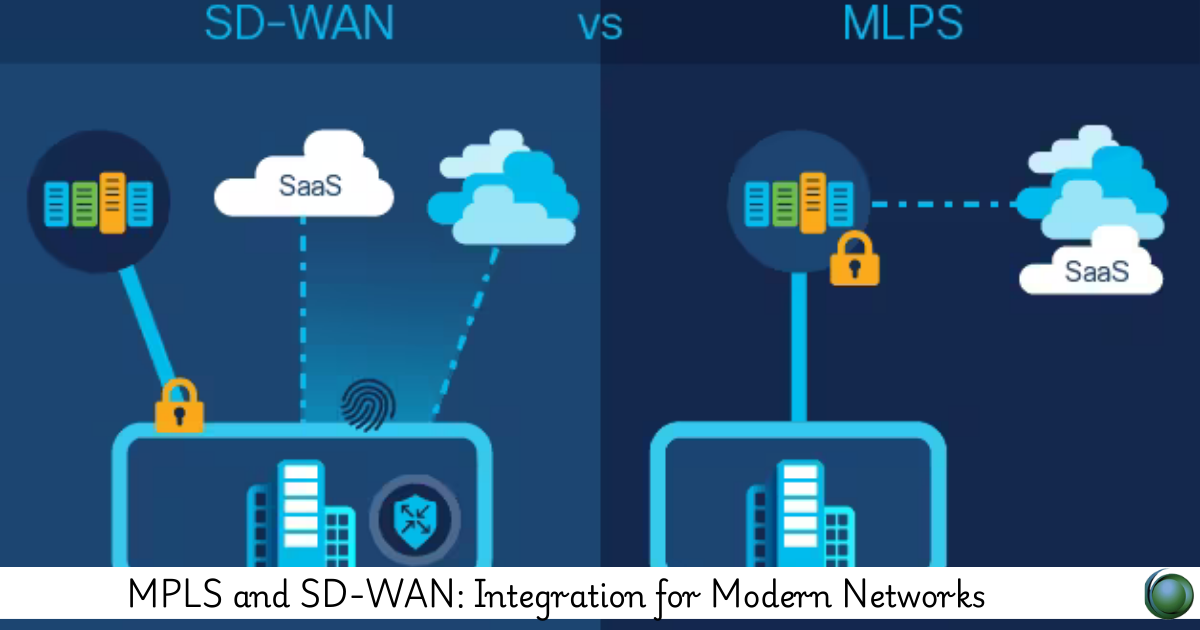Description
Introduction of Multiprotocol Label Switching &SD-WAN
Multiprotocol Label Switching (MPLS) has long been a standard for enterprise networking, offering reliable and high-performance connectivity. However, the rise of Software-Defined Wide Area Networking (SD-WAN) has introduced a new paradigm, enabling greater flexibility, cost efficiency, and cloud-centric networking. This course explores the integration of Multiprotocol Label Switching &SD-WAN to build modern, hybrid network architectures that optimize performance, security, and scalability.
Prerequisites
- Basic understanding of MPLS technology and routing principles.
- Familiarity with SD-WAN concepts and cloud networking.
- Knowledge of network security fundamentals.
- Experience with WAN architecture and connectivity solutions.
Table of Contents
1. Overview of MPLS and SD-WAN Technologies
1.1 Key Concepts of MPLS: Traffic Engineering and QoS
1.2 Introduction to SD-WAN: Benefits and Use Cases
1.3 Comparing MPLS and SD-WAN: Strengths and Limitations
2. Designing Hybrid MPLS and SD-WAN Architectures
2.1 MPLS and SD-WAN Coexistence Models
2.2 Traffic Steering Between MPLS and SD-WAN Links
2.3 Policy-Based Routing and Application-Aware Traffic Management
3. Migration Strategies: Transitioning from MPLS to SD-WAN
3.1 Step-by-Step Migration Planning
3.2 Phased Deployment Approaches
3.3 Challenges and Best Practices for Hybrid Environments
4. Performance Optimization in Multiprotocol Label Switching &SD-WAN
4.1 WAN Optimization and Dynamic Path Selection
4.2 Application Performance and SLA Management
4.3 Enhancing Network Resilience with Redundancy and Failover
5. Security Considerations in Multiprotocol Label Switching &SD-WAN Integration
5.1 Security Differences Between MPLS and SD-WAN(Ref: Introduction to SD-WAN: Revolutionizing Network Architecture)
5.2 Implementing Zero Trust Security in Hybrid Networks
5.3 Secure Tunneling, Encryption, and Threat Mitigation
6. Cloud Connectivity and Edge Computing in Multiprotocol Label Switching &SD-WAN
6.1 MPLS and SD-WAN for Multi-Cloud and SaaS Integration
6.2 Direct Cloud Connectivity with SD-WAN
6.3 Edge Computing and 5G Integration in Hybrid Networks
7. Monitoring, Troubleshooting, and SLA Management in Multiprotocol Label Switching &SD-WAN
7.1 Performance Monitoring Tools for MPLS and SD-WAN
7.2 Troubleshooting Common Network Issues
7.3 Ensuring SLA Compliance and Real-Time Network Analytics
Integrating Multiprotocol Label Switching &SD-WAN allows enterprises to balance reliability, cost-effectiveness, and agility in their network infrastructure. By understanding best practices for hybrid networking, organizations can optimize performance, enhance security, and ensure seamless cloud connectivity for modern digital operations.







Reviews
There are no reviews yet.